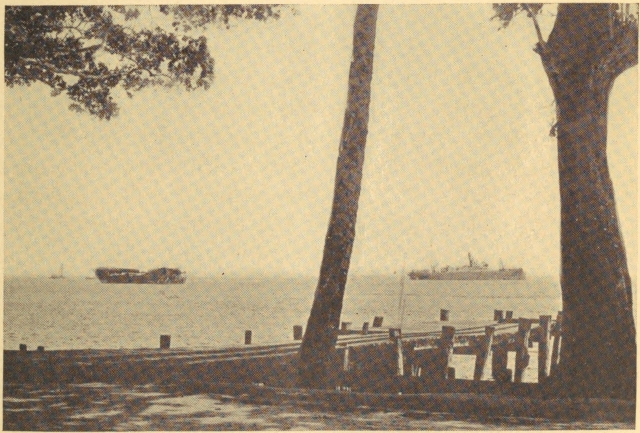
**Enigmatic “Fatberg” Spheres Appear on Sydney Shores: An In-Depth Inquiry**
In an unusual and initially bewildering occurrence, a multitude of dark, adhesive spheres washed ashore in Sydney, Australia, throughout October 2024. Bearing a resemblance to tar balls — deposits typically linked with oil spills or tanker mishaps — these enigmatic items prompted temporary beach closures and raised alarms among both residents and environmental officials. However, a surprising discovery soon emerged: these spheres were not simply byproducts of crude oil or oceanic pollution. Rather, they were composed of a mixture of materials that distinctly indicated human waste.
### Transition from Tar Balls to Fatbergs
The objects initially generated concern due to their similarity to “tar balls,” often found post oil spills and fuel releases at sea. This hypothesis appeared plausible at first glance. The spheres were dark, sticky, and contained substances that looked like diesel oil.
However, as a group of researchers from the University of New South Wales (UNSW) in Sydney conducted a thorough analysis, a different narrative began to unfold. In fact, the materials identified within the spheres resembled ‘fatbergs’ — extensive, solidified masses developed from fats, oils, and non-biodegradable debris capable of accumulating in sewer systems.
“Initially, the situation was confusing since the spheres are black, and there are insoluble black substances within them that don’t dissolve in water or organic solvents,” explained Jon Beves, a chemist at UNSW and the head researcher of the investigation. “It had all the characteristics of containing oil, which it does—but the majority of what’s inside is cooking oil, soap scum, and other human-related waste.”
### The Science Informing the Spheres
Uncertain about their makeup, Beves and his team commenced thorough analytical evaluations. What began as a simple inquiry into whether these materials were tar balls quickly evolved into a multi-disciplinary exploration, involving around 40 different researchers eager to crack the mystery.
With assistance from UNSW’s Mark Wainwright Analytical Centre and various local and national government entities, the team utilized multiple advanced methodologies, including carbon-14 dating, mass spectrometry, elemental analysis, and microscopy.
During their examinations, they treated the spheres by dissolving portions of them in organic solvents. Notably, roughly 30–50% of the matter was soluble in dichloromethane, enabling the team to start identifying the various compounds within. An array of spectroscopic techniques, such as Nuclear Magnetic Resonance (NMR), Fourier Transform Infrared (FTIR), Ultraviolet-Visible Spectroscopy (UV-Vis), and Gas Chromatography-Mass Spectrometry (GC-MS), were employed to unveil the intricate makeup of the spheres.
### Revealing the Components
The findings were astonishing. Instead of being exclusively oil-based, the dark, sticky spheres turned out to be a combination of hundreds, perhaps thousands, of different substances. Notable discoveries included:
– **Fatty acids** typically found in cooking oils, soaps, and beauty products
– **Petroleum hydrocarbons** akin to those present in petrol, engine oil, and diesel
– **Inorganic materials** like sand, calcium salts, and microorganisms, suggesting wastewater contamination
– **Epicoprostanol**, a byproduct of human feces, confirming sewage-related waste
– Minute quantities of **pharmaceutical drugs**, including psychoactive compounds like tetrahydrocannabinol (THC) and methamphetamine
– Industrial pollutants, particularly **pesticides** and **per- and polyfluoroalkyl substances** (PFAS), commonly used in firefighting foam and non-stick cookware
These substances distinctly pointed to a source that was deeply rooted in human activity: the spheres were predominantly made up of waste derived from human endeavors.
### Radiocarbon Dating Illuminates
One of the most revealing elements of the investigation was the employment of radiocarbon dating, enabling the team to ascertain the age and origin of the organic material. The analysis revealed that the bulk of the carbon present in the spheres did not originate from ancient fossil reserves like crude oil. Instead, around 70% of the carbon identified within the spheres came from recent biological sources, such as plants and animals. On the exterior, a significant portion, approximately 85%, was modern “plant carbon” — indicative of elements like vegetable oil. This effectively discounted the theory that these spheres resulted solely from an oil spill.
Data from radiocarbon dating confirmed the assertion that these sophisticated mixtures were not accidental leftovers from industrial incidents; they were primarily created from human consumption byproducts such as cooking fats and waste oils.
### Origin Puzzle Persists
While the makeup of the spheres is now well-established, their definitive origin remains uncertain. “One credible possibility could be that it’s from sewer overflow into the stormwater, which is a common occurrence,” Jon Beves suggested.